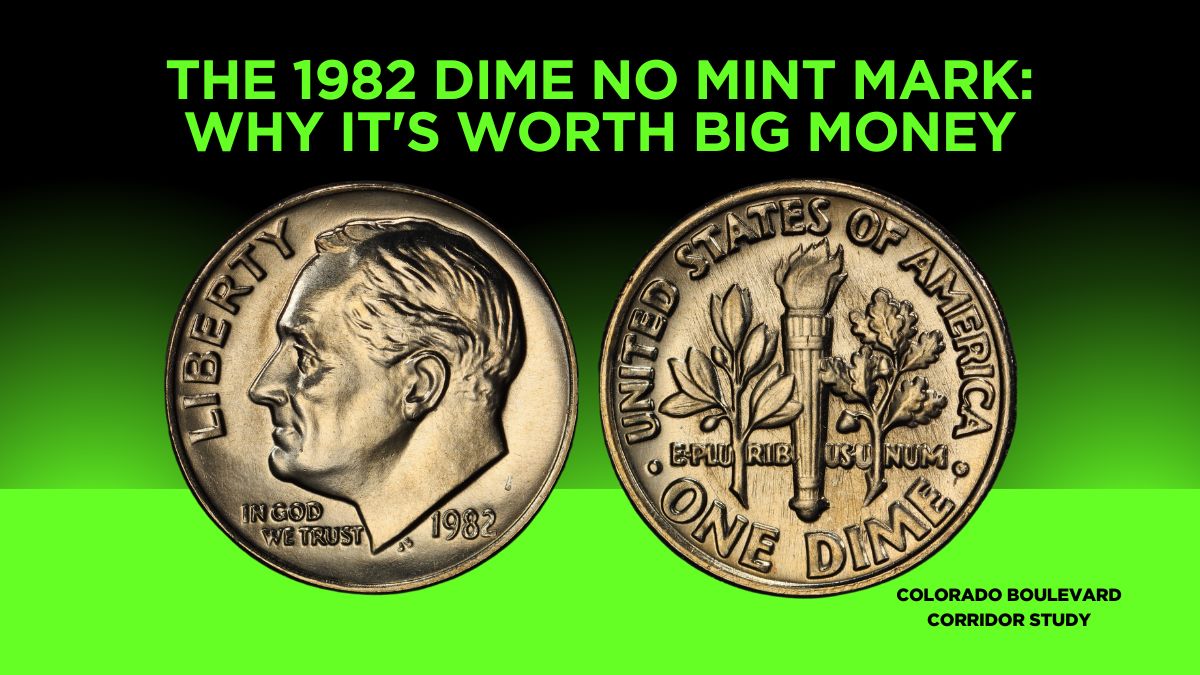In the world of coin collecting, certain minting errors can transform everyday currency into highly sought-after treasures. One such example is the 1982 Roosevelt Dime with no mint mark, a rare anomaly that has piqued the interest of numismatists and collectors alike.
This article delves into the origins, discovery, and current value of this unique coin, providing insights into why it’s worth significantly more than its face value.
The Significance of Mint Marks
Mint marks are small letters on coins that indicate the U.S. Mint facility where the coin was produced. For dimes minted in Philadelphia, the letter “P” serves as the mint mark.
However, in 1982, an unusual error occurred: some dimes were released without the “P” mint mark, making them rare collectibles.
Discovery of the 1982 No Mint Mark Dime
The first reports of the 1982 No “P” Dime emerged in December 1982, primarily in Sandusky, Ohio. Approximately 8,000 to 10,000 of these error coins were discovered, with many being distributed as change at the local Cedar Point Amusement Park. Collectors and dealers quickly recognized the rarity of these dimes, leading to increased interest and value.
Understanding the Error
The absence of the “P” mint mark resulted from a die used in the minting process not being properly punched with the mint mark.
This oversight led to the production of dimes without the identifying letter, marking the first time a U.S. business strike coin was released without its intended mint mark.
Variations: Strong vs. Weak Strike
Collectors have identified two distinct varieties of the 1982 No “P” Dime:
- Strong Strike: These coins exhibit sharp, well-defined details, indicating a robust impression during minting.
- Weak Strike: These dimes show less distinct features, with some details appearing flattened or less pronounced.
The strong strike variety is generally more desirable among collectors due to its clarity and detail.
Current Market Value
The value of a 1982 No “P” Dime varies based on its condition and strike quality. As of recent assessments:
- Extra Fine (XF) Condition: Approximately $30
- Mint State (MS) Condition: Prices can range from $300 to over $500, depending on the coin’s grade and market demand.
Notably, a 1982 No “P” Dime graded MS67+FB (Full Bands) achieved a sale price of $1,380 in August 2007, highlighting the potential for higher values in exceptional cases.
Identifying a 1982 No “P” Dime
To determine if you possess one of these rare dimes:
- Examine the Obverse (Front) Side: Look to the right of the date (“1982”). If the space is blank with no “P” mint mark, you may have a valuable coin.
- Assess the Coin’s Condition: The better the condition, the higher the potential value. Coins with minimal wear and clear details are more sought after.
- Consider Professional Grading: For an accurate assessment of the coin’s condition and authenticity, submitting it to a reputable grading service is advisable.
1982 No “P” Dime Value by Condition
| Condition Grade | Description | Approximate Value |
|---|---|---|
| Extra Fine (XF) | Light wear on high points; all details visible | $30 |
| Mint State (MS) 65 | No wear; strong luster; few contact marks | $300 – $500 |
| Mint State (MS) 67+ | Pristine condition; exceptional eye appeal | $1,000+ |
FAQs
- Why does the 1982 No “P” Dime lack a mint mark?
- The omission resulted from a minting error where a die was not properly punched with the “P” mint mark, leading to the production of dimes without this designation.
- How many 1982 No “P” Dimes were minted?
- Estimates suggest that approximately 150,000 of these error coins were produced, with many discovered in the Sandusky, Ohio area.
- Are all 1982 dimes without a mint mark valuable?
- Yes, dimes from 1982 without the “P” mint mark are considered rare and can be valuable, especially in higher grades.
- What is the difference between strong and weak strike varieties?
- Strong strike dimes have sharp, well-defined details, while weak strike dimes exhibit less distinct features, often appearing flattened.

